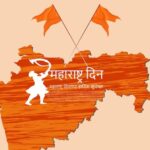I’m excited to share with you my knowledge and expertise about the folk dance of Assam. The traditional dances from this region are incredibly unique, both in terms of style and culture. They reflect the socio-cultural history of the people who inhabit this area, as well as their distinct identity. Through these dances, we can gain a better understanding of the cultural heritage and values that have been passed down through generations.
In this article I will discuss various aspects of folk dance in Assam, including its origins and development over time, popular styles, costumes and movements used throughout performances, and how it has evolved due to influences from other regions.
I’ll also provide an overview of current trends in Assamese folk dancing today so that readers can get a sense of what makes it so special.
Thanks for taking the time to learn more – let’s dive into the fascinating world of Assamese folk dance!
Origins And Development Of Assamese Folk Dance
Assamese folk dance has a rich history that is deeply rooted in the culture of Assam. It’s closely intertwined with spiritual symbolism and ancient rituals, as well as being accompanied by traditional indigenous music from this region. This type of regional dancing often serves to bring people together for important communal ceremonies such as weddings or festivals.
The most prominent form of Assamese folk dance is Sattriya Nritya, which was developed during the 15th century by Vaishnavite saints. These religious figures were responsible for introducing many aspects of Hinduism into the state of Assam, including various forms of performing art like dance and drama.
The dances are traditionally performed using elements such as facial expressions, footwork, body movements and hand gestures. All these components have their own special meaning and help tell stories about Indian mythology or express emotions such as joy or sorrow.
Meanwhile, accompanying musical instruments include drums like dholak and taal (cymbals). They provide rhythms along with other stringed instruments like esraj and violin to add melodious tunes to complete the performance. Every aspect works together to create an atmosphere filled with emotion which can be felt by everyone present at the ceremony or event.
Moving on…
Traditional Costumes And Movements
Folk dance of Assam is a unique combination of traditional costumes and movements that have been passed down for generations. It has become an important part of the culture in India, particularly in the northeast region.
The traditional dances are usually accompanied by music composed specifically for each dance as well as specific techniques used to perform it perfectly. Some common elements found in folk dance of Assam include:
- Use of vibrant colors and intricate patterns;
- Complex footwork and hand gestures;
- Traditional clothing such as saris and dhotis.
These various components come together to form a beautiful display that is sure to captivate any audience. Beyond its visual appeal, folk dance of Assam can also be seen as a way to keep tradition alive while connecting people from different regions through shared cultural practices.
With influences from other regions, this type of dancing continues to evolve and remain relevant today.
Influences From Other Regions
I’m an expert on Assamese folk dance, and I’ve noticed that the traditional dances are greatly influenced by other regions in India.
Cultural exchange is a significant part of this influence; for instance, many ritualistic practices have been adopted from elsewhere in the country. This has resulted in some unique forms of performance art that can only be found in Assam.
These cultural exchanges also often involve intricate footwork and hand gestures associated with certain themes or stories being told during performances. A lot of these movements draw inspiration from different parts of India, as well as foreign countries like Bangladesh and Nepal.
It’s fascinating to see how traditional dancing styles have evolved over time due to influences from outside sources. The fact that so much intercultural sharing occurs within Assamese folk dance makes it all the more interesting.
Every region brings something new to Assamese culture, contributing to its rich heritage and history. Moving forward, I look forward to seeing what popular styles will emerge out of this ongoing fusion!
Popular Styles Of Assamese Folk Dance
Folk dance of Assam is a vibrant and lively art form that has been passed down through generations. Like a colourful kaleidoscope, it reflects the cultural fusion between India’s North East region with influences from Bangladesh and Myanmar. It also showcases the state’s unique musical accompaniment which combines traditional instruments such as taal, khol, dotara, flute and xylophone to create an exquisite melange of sound.
One of the most popular styles of folk dancing in Assam is Bihu dance. An essential part of the spring-time Bihu festival, this style exhibits joyous energy with its fast rhythms and intricate hand movements set against a backdrop of captivating music.
Similarly, another celebrated style known as Jhumur displays tremendous grace and poise while narrating stories with help of their moves. Even though both these dances are quite distinct in their own right; they share some common steps too!
Assamese Folk Dance continues to be an integral part of social gatherings in modern times – bringing people together in celebration no matter what the occasion may be. From lavish weddings to small family functions; there is always something special about watching dancers perform amidst clapping hands and melodious tunes playing in the background.
As we move on to explore current trends in Assamese Folk Dance, one thing remains certain: Its timelessness will never cease to mesmerize us all!
Current Trends In Assamese Folk Dance
I’ve been a folk dance of assam specialist for many years, and I’m always excited to share my knowledge.
Assamese folk dances are filled with energy and joy. They’re usually performed in celebratory occasions such as festivals or other special celebrations. These performances typically involve the whole community, which adds to the festive atmosphere.
The most popular Assamese folk dances include sattriya, bekti, bihu, borgeet and nagaon gaan. Each has its own unique style that combines music, story-telling and physical movements like jumps, spins and footwork. The costumes also vary from dance to dance; women often wear brightly coloured sarees while men might opt for dhoti-kurtas or gamchas.
Overall, these traditional forms of cultural expression provide audiences with an opportunity to appreciate history through artistry. By watching them perform intricate steps in sync with each other, we can get a glimpse into what life was like hundreds of years ago in Assam – something that would otherwise remain hidden forever!
Frequently Asked Questions
Q1. What Is The Cultural Significance Of Assamese Folk Dance?
A. Assamese folk dance has a deep cultural significance.
Not only are their costumes stunning and intricate, but the types of dances themselves vary significantly depending on the region they come from.
As an expert in Assamese folk dance I know that every aspect of these dances is steeped in tradition and heritage, making them more than just entertainment – they’re part of the culture!
Q2. Are There Any Festivals That Are Dedicated To Assamese Folk Dance?
A. Yes, there are several festivals that are dedicated to Assamese folk dance.
These include the Doul Utsav in Barpeta and Majuli, Rongali Utsav in Nagaon and Bihu Festival of Guwahati just to name a few.
Many of these celebrations feature traditional costumes and dance forms unique to this region of India.
They offer an opportunity for locals as well as tourists to immerse themselves in the culture through music and dance performances that showcase the beauty of Assam’s folk art heritage.
Q3. Are There Any Unique Instruments Used In Assamese Folk Dance?
A. Folk dance of Assam has its own unique style, and the accompanying instruments are just as special.
From traditional drums to flutes crafted from bamboo, these musical instruments truly enhance the beauty of this ancient form of art.
Plus, with intricate costumes and dynamic movements that vary according to different regions in the state, it’s no surprise why folk dance is so beloved by locals!
While some songs may be accompanied with more standard instruments like violins or guitars, many feature distinct strings made with local materials such as jute or banana fiber.
The combination of exotic music styles, ornate costumes and unusual instruments all come together to create a beautiful performance that can easily transport you into another world.
Q4. Are There Any Renowned Assamese Folk Dance Performers?
A. Yes, there are quite a few renowned Assamese folk dance performers.
From traditional costumes to intricate dance styles, these dancers have been entertaining audiences for years with their captivating performances.
Each of them has perfected the art of expressing stories and emotions through their graceful movements and powerful facial expressions, making it look like an effortless task.
To name a few, Anjana Sharma, Pranab Goswami, Manash Baruah and Bhaskar Jyoti Das are some of the most celebrated folk dancers from Assam.
Q5. Are There Any Opportunities To Learn Assamese Folk Dance?
A. If you’re interested in learning Assamese folk dance, there are plenty of opportunities available!
You can take classes from experienced instructors and organizations that specialize in traditional dances.
Alternatively, you could join a local dance group or even find online lessons if attending physical classes isn’t an option for you.
Learning techniques vary depending on the style of folk dance being taught, so make sure to research which method is best suited for your needs.
Conclusion
Assamese folk dance is an integral part of the culture and identity of Assam. It has been around for centuries, evolving over time to become more intricate and beautiful.
Even today, it continues to be a powerful form of expression that connects people with their heritage and brings joy to its audience.
Although learning traditional dance can seem daunting at first – especially if you’re not familiar with the style – don’t let that stop you from experiencing its beauty!
With enough practice and dedication, anyone can learn this art form. Plus, there are plenty of resources out there – such as online courses or classes in your local area – that make it easy to get started.
So why not give it a try? You won’t regret immersing yourself in the vibrant traditions of Assamese folk dance!
Read our latest blog about: Army Values Essay – 3405 Words
- Sri Lalitha Ashtottara Shatanamavali in Telugu – శ్రీ లలితాష్టోత్తరశతనామావళిః - April 11, 2024
- Sri Durga Kavacham in Telugu – శ్రీ దుర్గా దేవి కవచం - April 10, 2024
- Shivananda Lahari in Telugu – శివానందలహరీ - April 9, 2024


